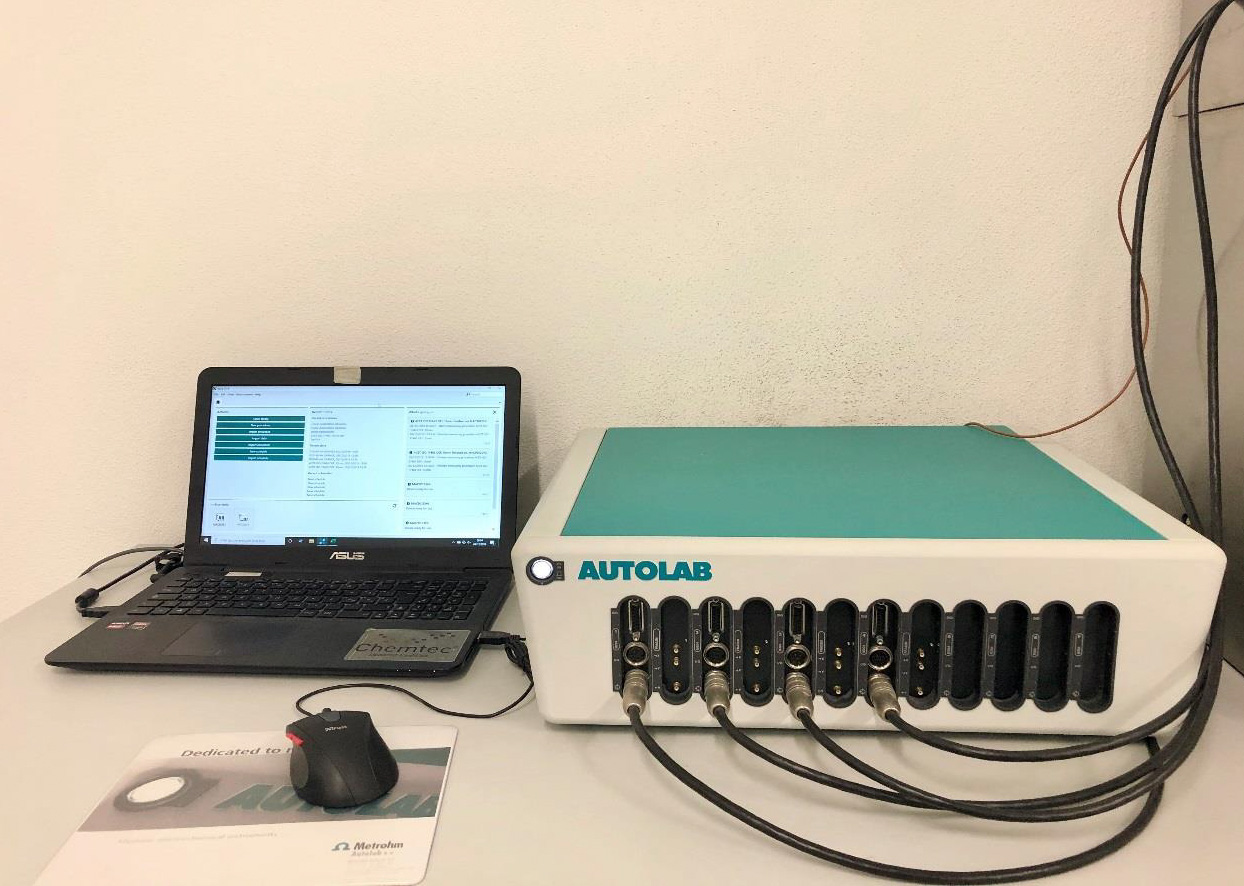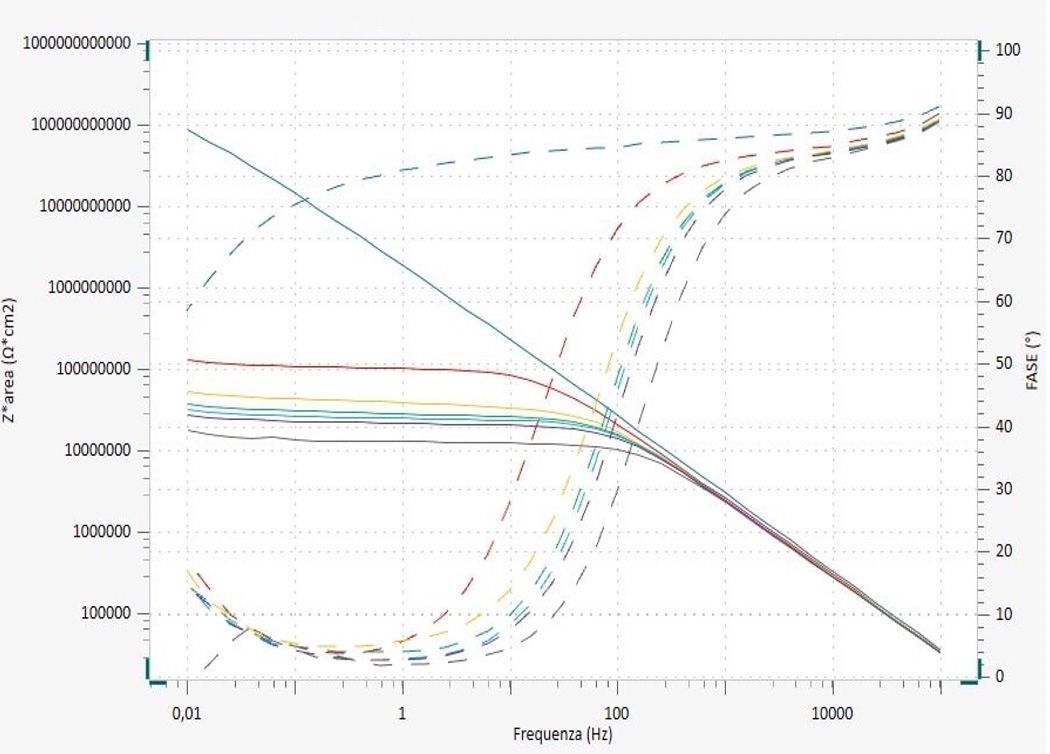Services and Consulting
ACET METHOD - Accellerated Cyclic Electrochemical Technique

The ACET method allows to study the corrosion resistance of organic coatings applied to any metal surface in just 24 hours.
The method, regulated by the ISO 17463 standard, is an alternative to the corrosion resistance test in salt spray.
SALT SPRAY
- Duration: weeks to months
- Results: subjective and empirical
- Qualitative proof
- Provides general information on corrosion resistance
- Not very repeatable and not very reproducible
ACET
- Duration: 24 hours
- Results: objective and numerical
- Quantitative analysis
- It provides detailed information on the entire corrosive mechanism and its causes
- Repeatable and reproducible
OPERATION
The technique consists in applying a potential difference (electrochemical stress) to the painted sample and measuring, after a certain relaxation time, the impedance of the system. Impedance is a physical quantity that represents the force of opposition of the sample to the passage of current.
The stress / relaxation / impedance sequence is repeated 6 times or until total degradation of the material. Thanks to a mathematical algorithm of our development it is possible to compare the results obtained with the ACET method to the hours of the salt spray test. Furthermore, again through this mathematical algorithm, it is possible to establish the causes that determined the corrosive mechanism (porosity of the coating, absorption of humidity, electrical insulation of the organic film, etc.).


APPLICATION
- Corrosion resistance analysis of painted metal samples
- Determination of the quality of the surface treatment process
- Establish on which phase of the process it is necessary to intervene to improve corrosion resistance (pre-treatment, quality of the coating, cross-linking of the paint, etc.)
- Study of the kinetics of corrosive processes
- Determination of the quality of different metallic coatings and/or liquid or powder paints.

